Ukrainian anti-aircraft machine guns of 12,7–14,5 mm caliber
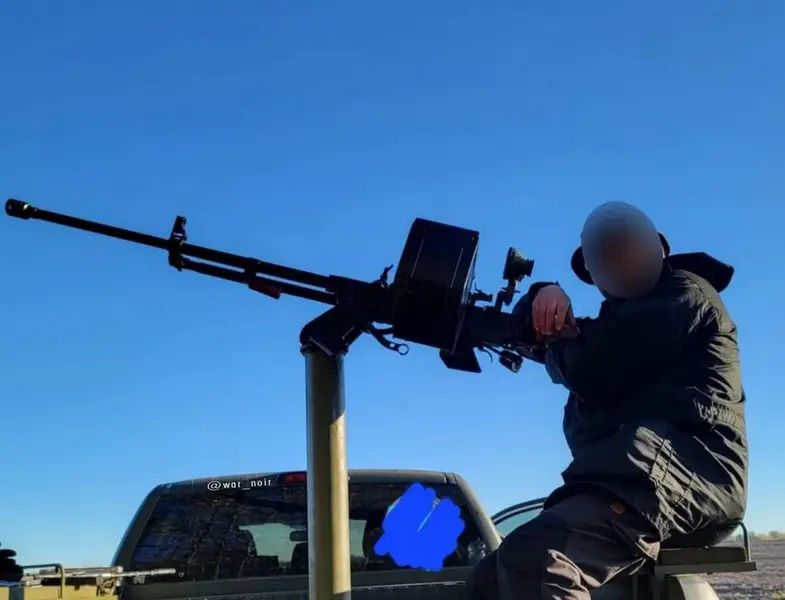
Until recently, the anti-aircraft potential of heavy machine guns was assessed by experts as low. In the armed forces of economically and technologically developed states, they were mainly considered as a means of fire support at distances inaccessible to light infantry. arms. Also, large-caliber machine guns could destroy light armored vehicles and unarmored vehicles.
In a number of countries, 12,7-mm anti-aircraft machine guns have been preserved on the main combat tanks and armored personnel carriers. However, these weapons are extremely ineffective against modern jet fighter-bombers and attack aircraft, and were mainly intended to counter attack helicopters and combat enemy infantry armed with light anti-tank weapons.
Anti-aircraft machine gun mounts of 12,7–14,5 mm caliber, mounted on off-road vehicles, are very popular among various types of irregular rebel formations. However, the large-caliber machine guns at the disposal of the partisans, “fighters for freedom and faith,” as a rule, fired at ground targets and very rarely at air targets.
The situation changed greatly after reconnaissance and attack unmanned aerial vehicles began to be used on a massive scale during the military operations. Drones with an electric drive, used on the line of combat contact and in the near rear of the enemy, due to their small IR signature, turned out to be practically invulnerable to MANPADS with an IR seeker, and using anti-aircraft missiles with a photocontrast, radio command or laser guidance system against them is very expensive.
UAVs with an internal combustion engine, the seekers of the missile defense systems of the Igla and Strela-10M3 complexes are reliably captured from a distance of 2,5–3 km, provided that they do not fly too low. But even in this case, the cost of scarce anti-aircraft missiles in most cases is much higher than that of intercepted UAVs.
Under the current conditions, large-caliber anti-aircraft machine guns turned out to be in great demand, which until February 2022 were mostly stored in warehouses.
Anti-aircraft guns based on the 12,7 mm DShKM machine gun
The armed Ukrainian formations have a large number of DShKM machine guns, which they inherited from the Soviet Army and received from other states.
The DShKM machine gun chambered for 12,7×108 mm, adopted for service in 1946, was created on the basis of the DShK machine gun, which was actively used during the Great Patriotic War. Based on the experience gained during combat operations, the power mechanism was improved, the manufacturability increased, the barrel mount was changed, and a number of measures were taken to increase survivability and reliability.
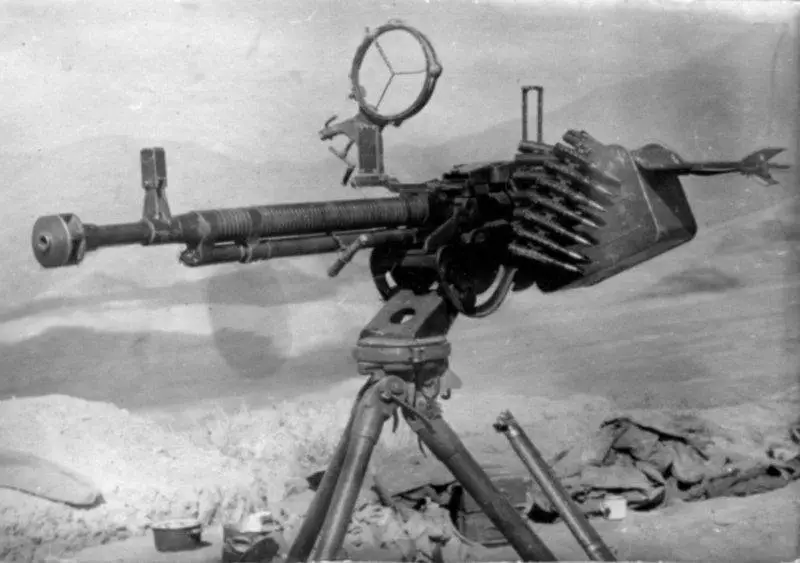
12,7 mm machine gun DShKM
Externally, the modernized machine gun is distinguished by a different form of muzzle brake, the design of which was changed in later DShKs, and the silhouette of the receiver cover, in which the drum mechanism was eliminated - it was replaced by a receiver with two-way power supply.
The weight of the machine gun with a belt on a machine without a shield is 148 kg. The machine gun body weighs 33,5 kg. The effective firing range at air targets does not exceed 1 m, the height reach is up to 500 m. The B-700 armor-piercing incendiary bullet with a steel core weighing 32 g has an initial speed of 48,3 m/s and penetrates normally at a distance of 840 m 500 mm armor. The rate of fire is 15–550 rounds/min. Combat rate of fire – no more than 600 rounds/min.
Based on personal experience of shooting at a parachute target, I can say that in practice the rate of fire is significantly lower, since targeted and trouble-free firing is achieved in bursts of two or three shots. To ensure stability during anti-aircraft shooting at large elevation angles, the legs of the tripod must be buried in the ground, covered with stones or bags of earth.
In the Ukrainian Armed Forces, DShKM machine guns, available in the air defense structure, are most often used not from standard tripod machines, but are rigidly mounted on various handicraft pedestals or pivots installed on pickup trucks.
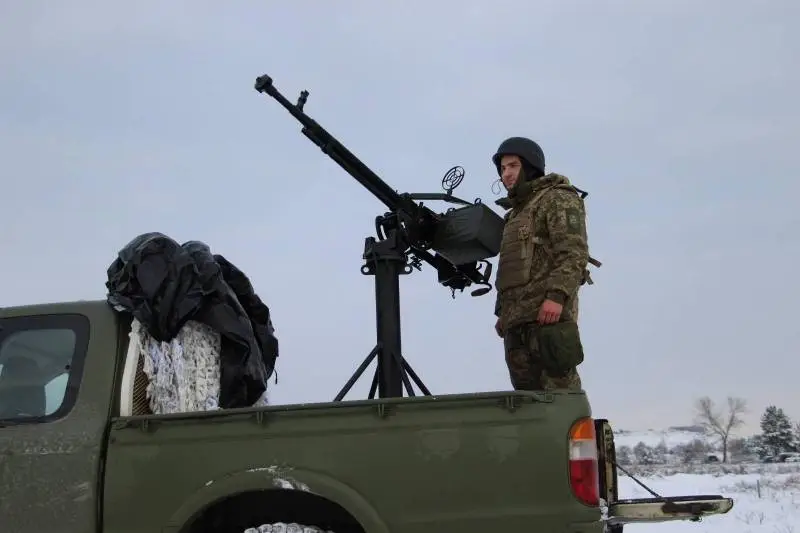
Mass reactivation of DShKM taken from storage began in the second half of 2014. It turned out that many machine guns were in need of repair.
In 2023, Ukraine received a number of imported DShKM. It is reliably known that Romania donated several dozen machine guns.
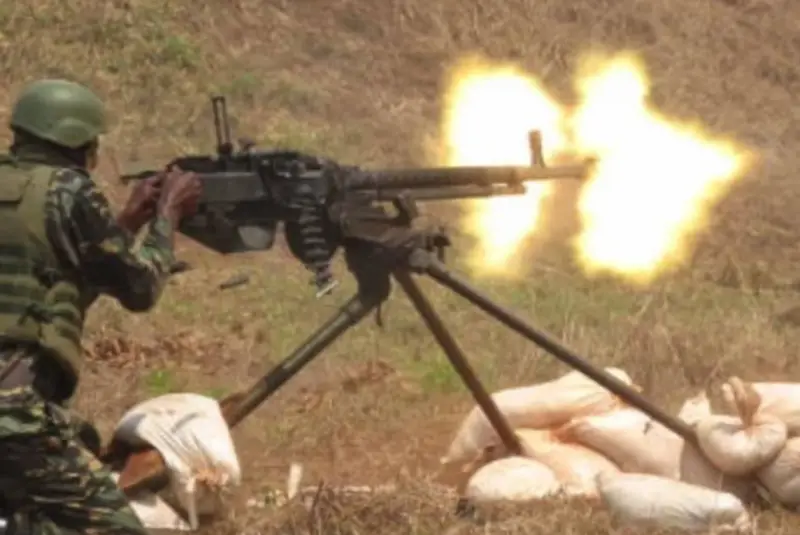
The Romanian model differs from the Soviet DShKM in its sights and mounting, and has a barrel without fins.
In general, the DShKM and its foreign clones, which are in service with the Ukrainian Armed Forces, are reliable, quite effective, although somewhat overweight by modern standards, weapons. The problem of low mobility and unsatisfactory stability of the standard tripod when firing long bursts from the ground is solved by installing it on various vehicles.
Due to the relatively low rate of fire and significant recoil, a single DShKM cannot ensure guaranteed destruction of a Geranium-type kamikaze drone within its reach. However, this also applies to other Ukrainian 12,7 mm anti-aircraft machine guns. To increase the probability of destruction, mobile fire groups of 4–6 machine guns on pickup trucks are used. ZPU crews receive target designation via radio network from an external source and conduct concentrated fire at one target.
Use of the 12,7 mm NSV-12,7 “Utes” machine gun
In 1972, the NSV-12,7 Utes heavy machine gun, mounted on a 6T7 tripod machine, entered service with the Soviet Army. The rate of fire of the machine gun is 700–800 rounds/min, and the practical rate of fire is 80–100 rounds/min.
The weight of the machine gun with the machine was only 41 kg, but, unlike the DShKM on a universal machine, which with the machine had more than twice the mass, it was impossible to conduct anti-aircraft fire from it. In 1974, the troops received the first batch of universal 6U6 installations, allowing firing at enemy air. The weight of a universal ZPU with a machine gun and an ammunition box for 70 rounds does not exceed 92,5 kg.
However, the Soviet Army had relatively few such installations. A certain number of them ended up in units of the Marine Corps and Airborne Forces. Such installations were also attached to divisions of S-300PT/PS anti-aircraft missile systems to provide cover from attacks by low-altitude air attack weapons and combat ground enemies.
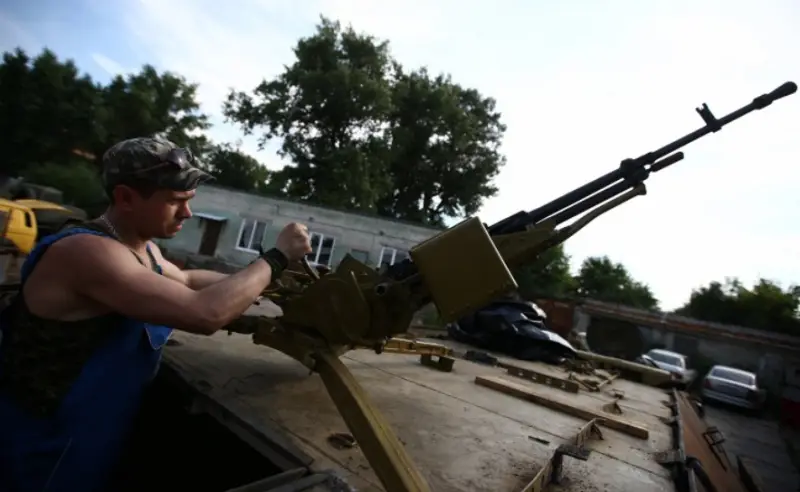
There is a photograph of the NSV-12,7 on the U6U universal machine mounted on the upper armor of the MT-LB multi-purpose armored tracked tractor.
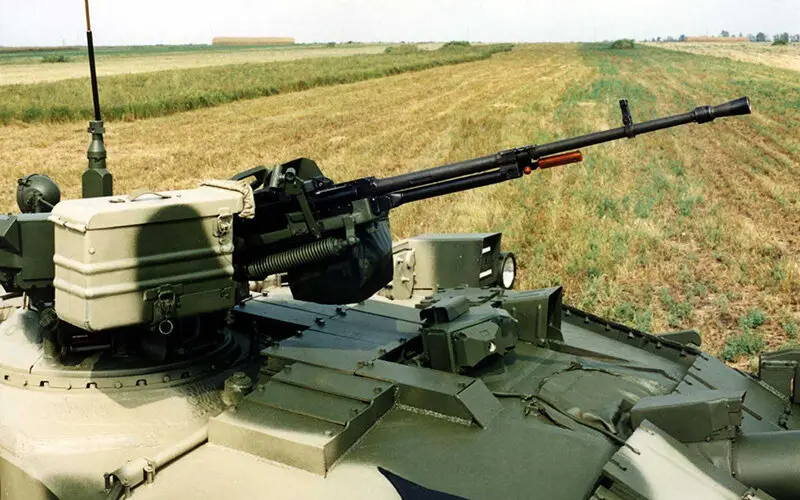
Much more NSV-12,7 was available on Ukrainian T-64, T-72 and T-80 tanks. A certain number of machine guns removed from damaged or faulty tanks were used to create improvised ZPUs.
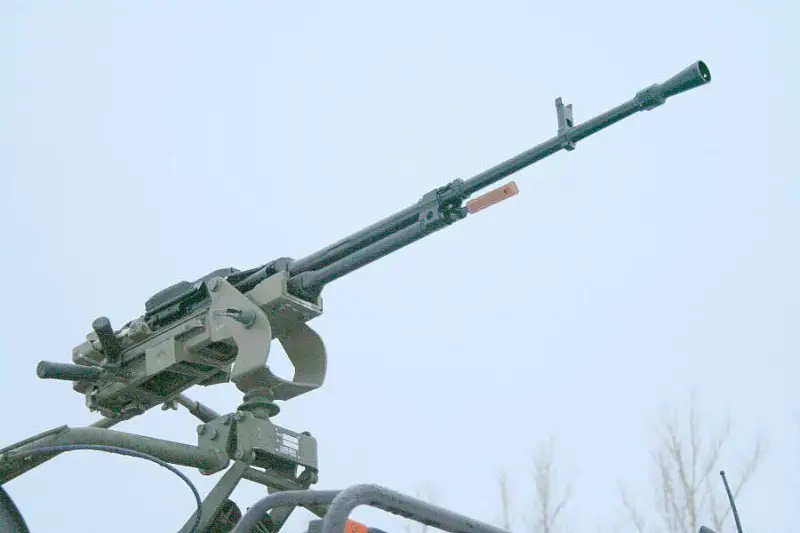
After about 15 years of independence, the command of the Ukrainian army came to the understanding that in the near future they would need to replace the worn-out Soviet-made Utyos, and in 2005 a program was initiated to create their own “big man.”
This task turned out to be not as simple as it seemed at first. Only in 2021, information appeared that the Mayak Plant OJSC, part of the Ukroboronprom State Concern, began testing the KM-12,7 machine gun, which is a Ukrainian analogue of the NSV-12,7.
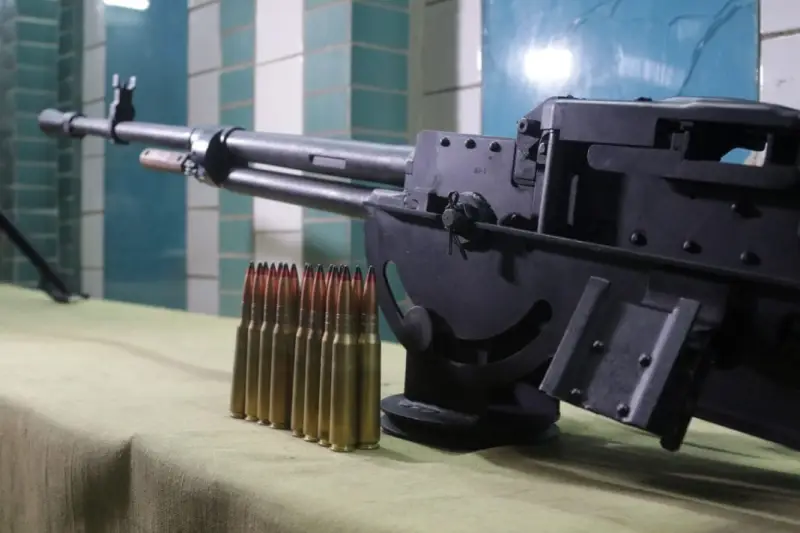
It is stated that the Mayak production model was created according to modern Western standards in partnership with Bartlein Barrels Inc. (USA) and ARS Ballistics (UK). Currently, there is no information about how the tests went and whether serial production of Ukrainian KM-12,7 machine guns has begun.
12,7 mm Browning M2HB machine gun
Since mid-2022, Western countries have transferred a significant number of 12,7 mm Browning M2HB machine guns to Ukraine. A machine gun of this model is very common in the armed forces of many countries.
The first mass-produced large-caliber Brownings were liquid-cooled, but in 1938 the M2NV received a longer barrel, and due to the abandonment of water cooling, the body weight of the machine gun was reduced to 38 kg. The rate of fire is 480–550 rounds/min. In such an unchanged form, this weapon actually still exists.
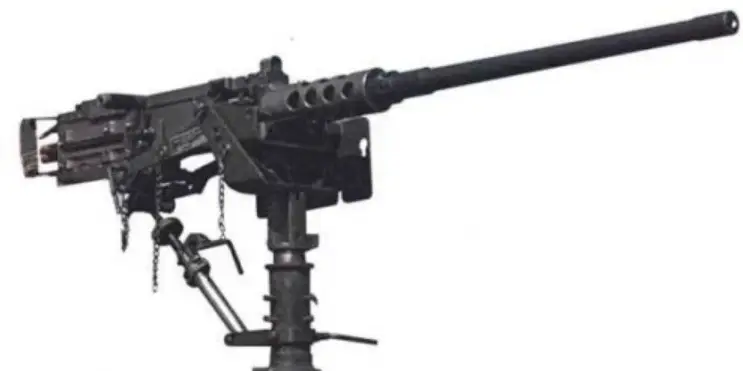
The M2 family of machine guns are manufactured by General Dynamics, Ohio Ordnance Works, US Ordnance and FN Herstal.
In terms of ballistic characteristics, the 12,7x99mm ammunition, also known as the 50 BMG, is very close to the Soviet 12,7x108mm cartridge. The M1 armor-piercing bullet weighing 48,6 g has an initial speed of 810 m/s and at a distance of 450 m, when hit at a right angle, is capable of penetrating an armor plate 16 mm thick.
Single, twin and quad anti-aircraft installations were created on the basis of the M2HB machine gun.
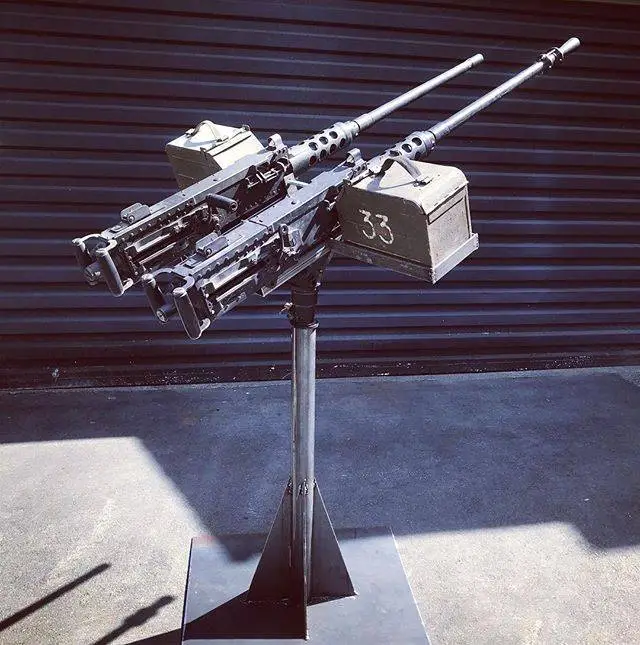
Due to the relatively low rate of fire, the ZPU, which uses one large-caliber Browning, does not provide the required density of anti-aircraft fire against air targets.
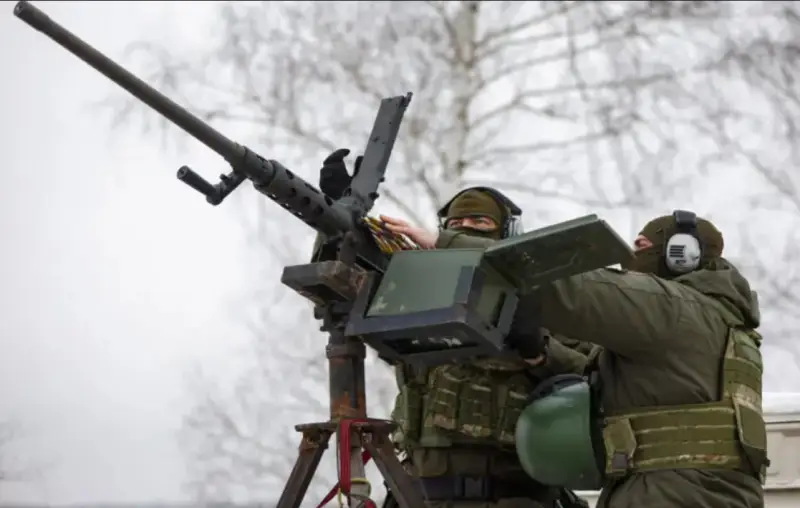
After the start of using M2HB machine guns in the Ukrainian Armed Forces, it turned out that the majority of Ukrainian crews do not know the specific features of their operation, and this leads to delays in firing. Nevertheless, 12,7-mm anti-aircraft Brownings are actively used in air defense units whose task is the close defense of important objects.
12,7 mm Chinese-made machine gun W85
Last year, Ukraine received several dozen Chinese-made W85 machine guns. The origin of these machine guns is unknown. Experts believe that the Chinese heavy machine guns were part of a shipment sent to the Yemeni Houthis from Iran and intercepted by the Americans.
In terms of basic characteristics, the fairly modern Chinese W85 is superior to the American Browning M2HB machine gun.

12,7 mm W85 machine gun
The W85 machine gun is equipped with a universal tripod, allowing it to fire at both ground and air targets. The machine weighs 17,5 kg. The body weight of the machine gun is 24 kg. Feeding comes from a 60-round open-link metal belt. Rate of fire 700–750 rounds/min.
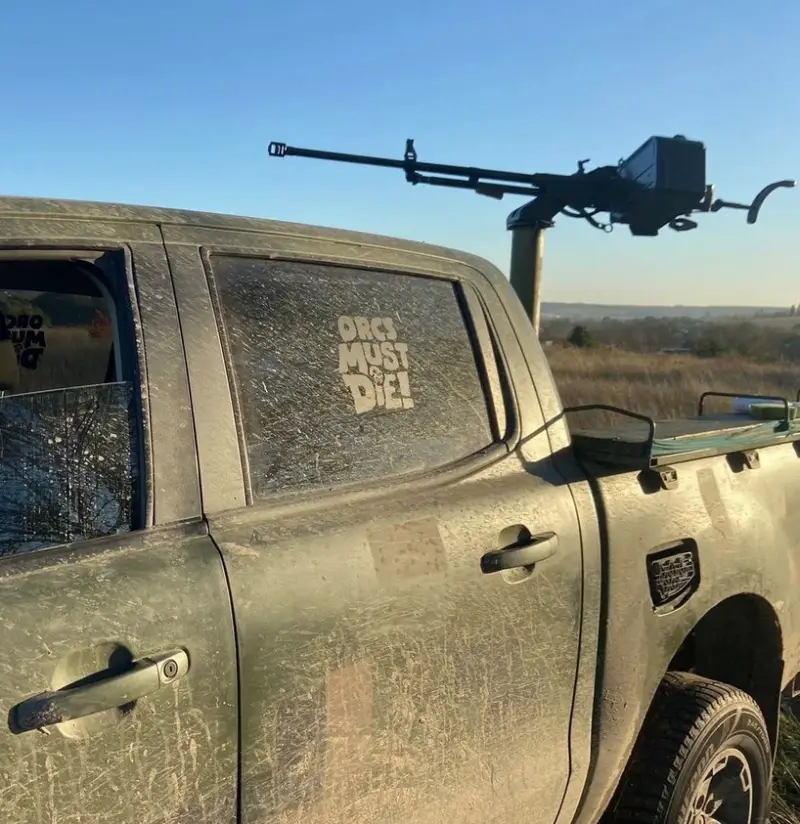
As with other 12,7 mm machine guns, Chinese W85s mounted on off-road pickup trucks are used in site air defense to protect against kamikaze drones.
14,5 mm anti-aircraft guns based on KPV/KPVT machine guns
By the time the armed conflict began in eastern Ukraine, there were several hundred 14,5-mm towed anti-aircraft guns based on the Vladimirov machine gun in the APU storage areas.
It is interesting that approximately 120 single-barrel ZPU-1, twin ZPU-2 and ZU-2 were recovered from warehouses. But this number did not include quadruple ZPU-4, although during the division of Soviet military property they went to Ukraine.
The KPV/KPVT machine guns are fired using a cartridge previously used in anti-tank rifles. Bullet weight is 60–64 g, initial speed is from 976 to 1 m/s. The muzzle energy of the KPV reaches 005 kJ (for comparison: the 31-mm DShK machine gun has only 12,7 kJ).
Effective ammunition for hitting air targets with strong armor protection at a distance of up to 2 m are 000 mm cartridges with an armor-piercing incendiary bullet B-14,5 weighing 32 g. This bullet penetrates armor 64 mm thick at an angle of 20 ° from the normal at a distance up to 20 m and lights up aviation fuel located behind the armor. The installation's ammunition can also include 14,5 mm cartridges with an armor-piercing incendiary-tracer BST bullet weighing 68,5 g, an instant-action incendiary bullet MDZ weighing 60 g, and a ZP sighting-incendiary bullet.
The ZPU-1 installation was put into service in 1949. Its main purpose was to protect infantry units from enemy airborne forces operating at altitudes of up to 1,5 km, and its secondary purpose was to defeat lightly armored vehicles at a range of up to 1 km. After the troops were sufficiently saturated with MANPADS in the 1970s, most of the 14,5-mm ZPUs were put into reserve.
ZPU-1 consists of a 14,5 mm KPV machine gun, a light carriage, wheel travel and sighting devices. The carriage provides all-round firing with elevation angles from –8° to +88°. Rate of fire – up to 600 rounds/min. Food is produced from a metal link belt placed in a cartridge box with a capacity of 150 rounds. The weight of the installation is 437 kg. Calculation – 5 people.
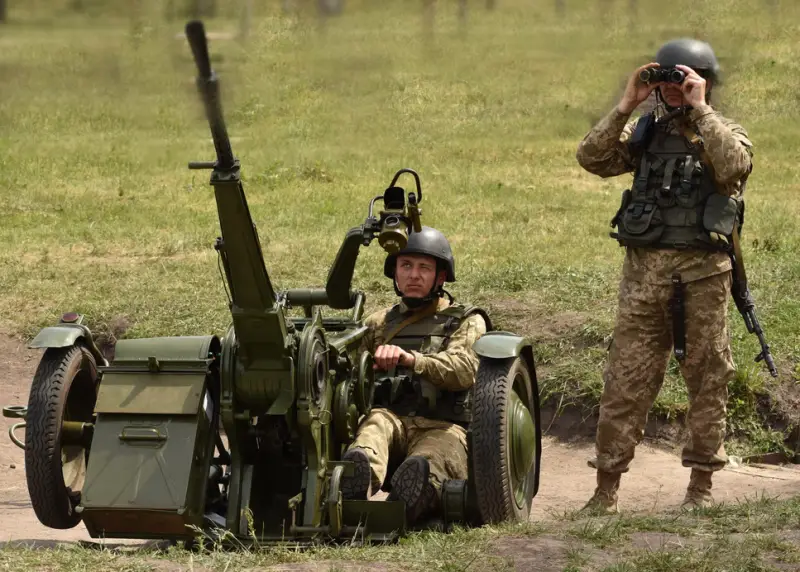
The lower machine of the carriage is equipped with a wheel travel, allowing the installation to be towed by light army vehicles. To transport the ZPU-1 over rough terrain and in mountainous conditions, it can be disassembled into separate parts and transported (or carried) in packs weighing up to 80 kg.
In parallel with the single-barrel ZPU-1, the twin ZPU-2 entered service. The installation consists of two 14,5 mm KPV machine guns, a lower carriage with three lifts, a rotating platform, an upper carriage (with guidance mechanisms, cradle and cartridge box brackets, as well as gunner seats), a cradle, sighting devices and a detachable wheel drive .
Guidance mechanisms allow for all-round firing with elevation angles from –7° to +90°. The maximum speed of the target being fired is 200 m/s. The total rate of fire is up to 1 rounds/min.
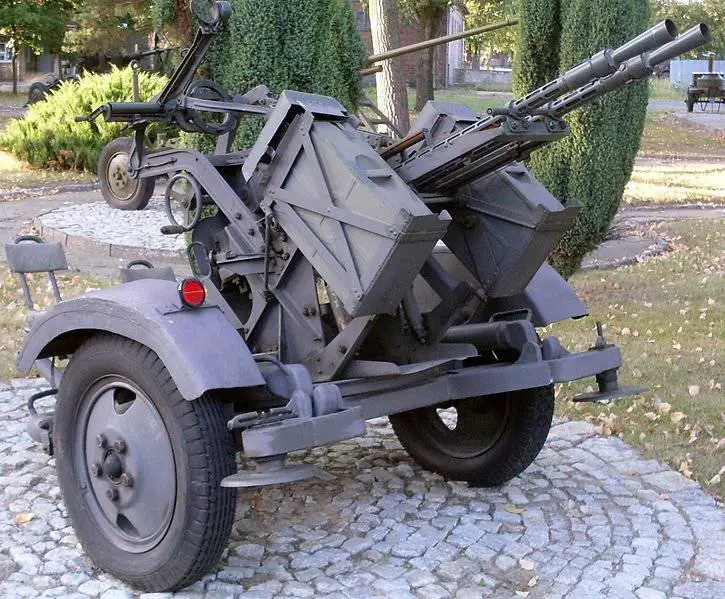
ZPU-2 in stowed position
Over long distances, a twin installation, ammunition and a crew of 6 people are transported in the back of an army truck. Although the mass of the combat-ready ZPU-2 reaches 1 kg, it can be moved over short distances by a crew of six people.
In 1954, by order of the Airborne Forces, production of the twin 14,5 mm ZU-2 unit began. Subsequently, it was also used by motorized rifles and marines.
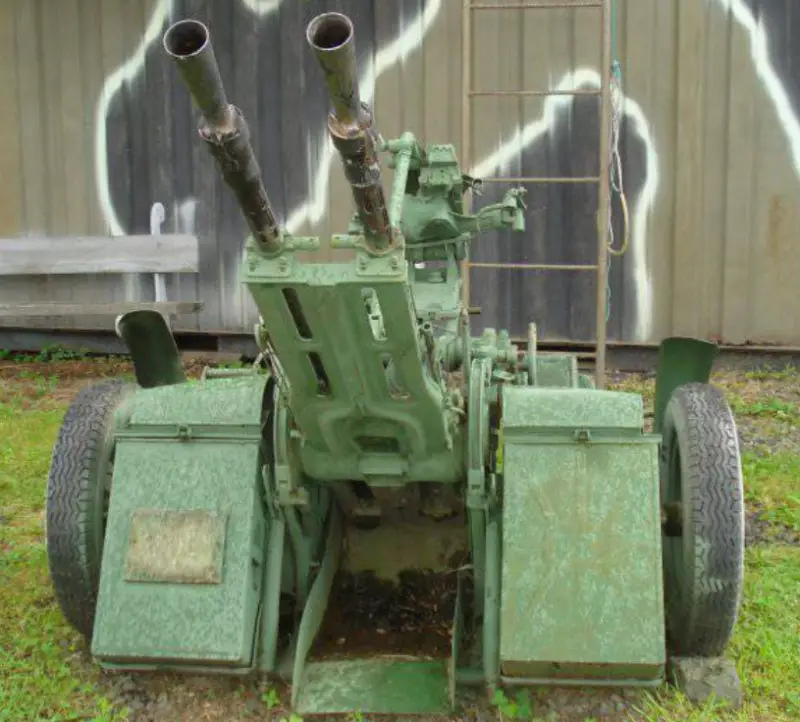
ZU-2
By simplifying the design of the wheel drive, it was possible to reduce the weight of the ZU-2 to 650 kg. The unit can be towed by light military vehicles or transported in the back of a truck. On the battlefield, the ZU-2 is moved by crew forces, and for transportation in mountainous conditions it is disassembled into parts weighing no more than 80 kg each. The combat effectiveness of the ZU-2 is approximately at the level of the ZPU-2.
Although the ZPU-1, ZPU-2 and ZU-2 installations that Ukraine inherited were initially towed, most of them were installed on vehicles to increase mobility.
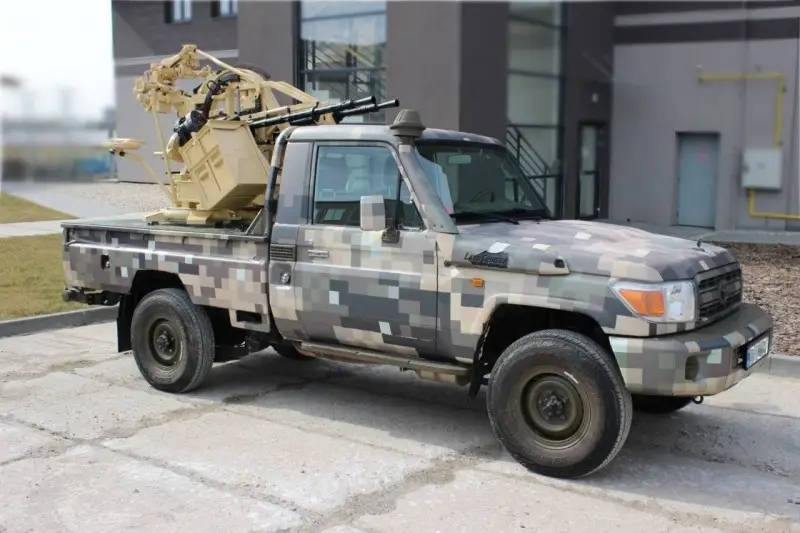
At the end of 2022, the Czech company Excalibur Army, based on the ZU-2, began producing Viktor (MR-2) anti-aircraft guns for the Ukrainian Armed Forces. Paired 14,5 mm mounts, taken from storage in the Czech Republic, were mounted on Toyota Land Cruiser J79 pickups after reactivation and restoration.
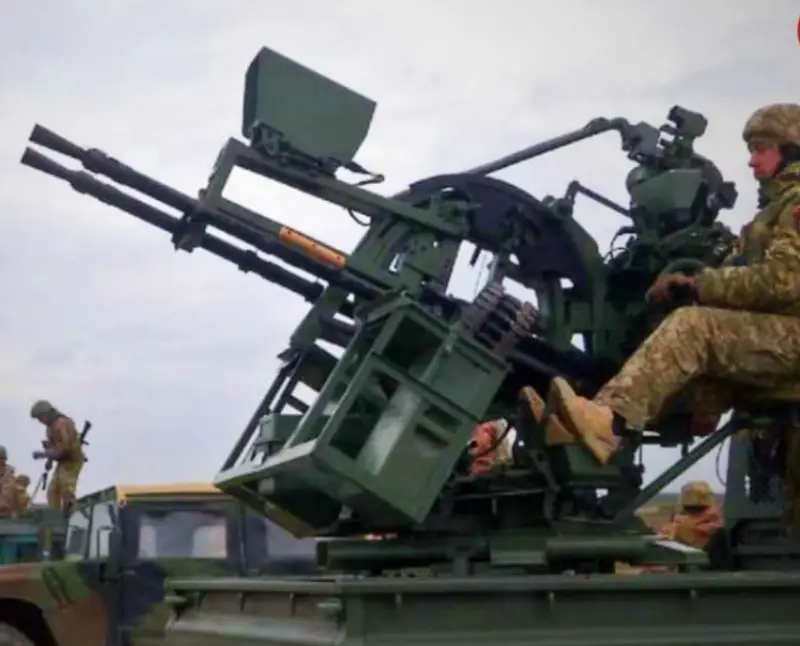
The Viktor installation is equipped with a collimator and thermal imaging sight. It is stated that the thermal imager at night in good weather conditions can detect a UAV with a gasoline engine at a distance of more than 1 m.
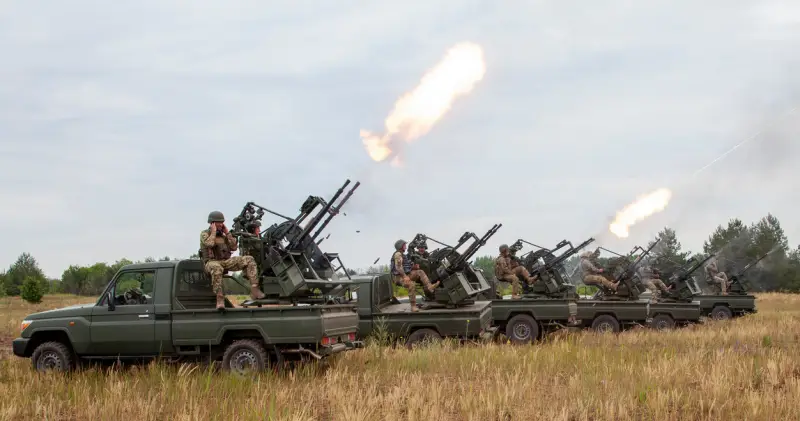
In February 2023, the Netherlands announced plans to finance the production of 100 such units. The first 15 Viktor ZPU units arrived at the Armed Forces of Ukraine in the summer of 2023.
Some European countries transferred to Ukraine their existing 14,5-mm KPVT machine guns, originally intended to arm the BTR-60, BTR-70 and BTR-80 armored personnel carriers. Ukraine does not have many Soviet-style armored personnel carriers left, and the extra KPVTs were used to manufacture improvised anti-aircraft installations.
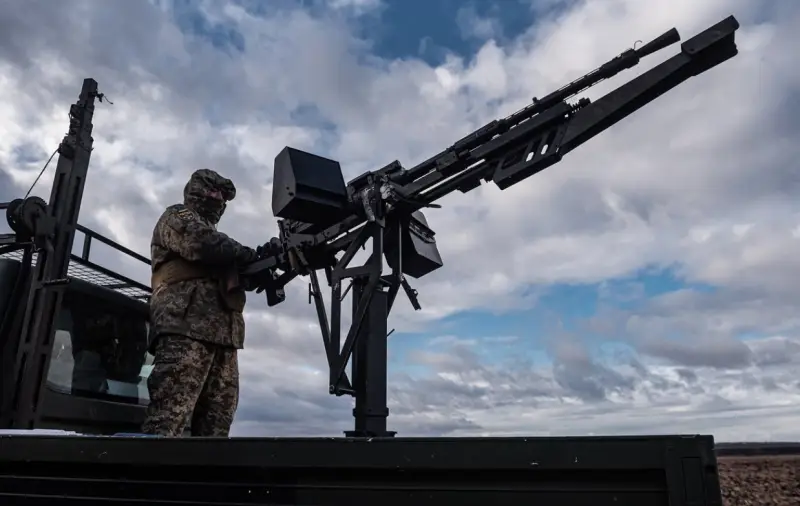
The KPVT machine gun, used in homemade anti-aircraft guns manufactured in auto repair shops, is mounted on a tubular frame placed on a rotating base mounted in the car body.
It is unclear whether the electric trigger mechanism has been retained or whether it has been converted to a manual one. Looking at this “homemade” ZPU, there is no doubt that it has poor stability when fired, and the first 1–2 shots in a burst are relatively accurate.
Продолжение следует ...
Information